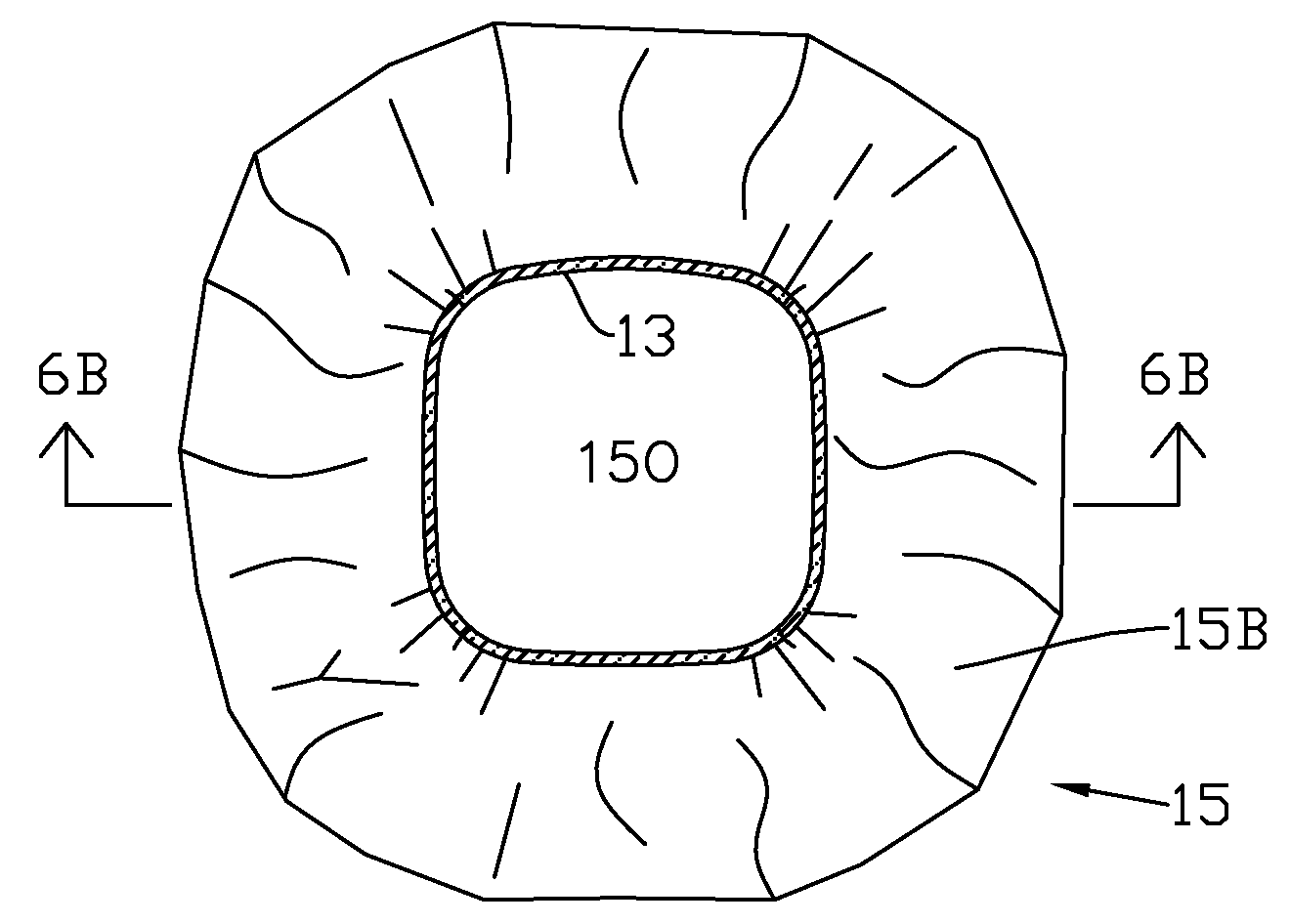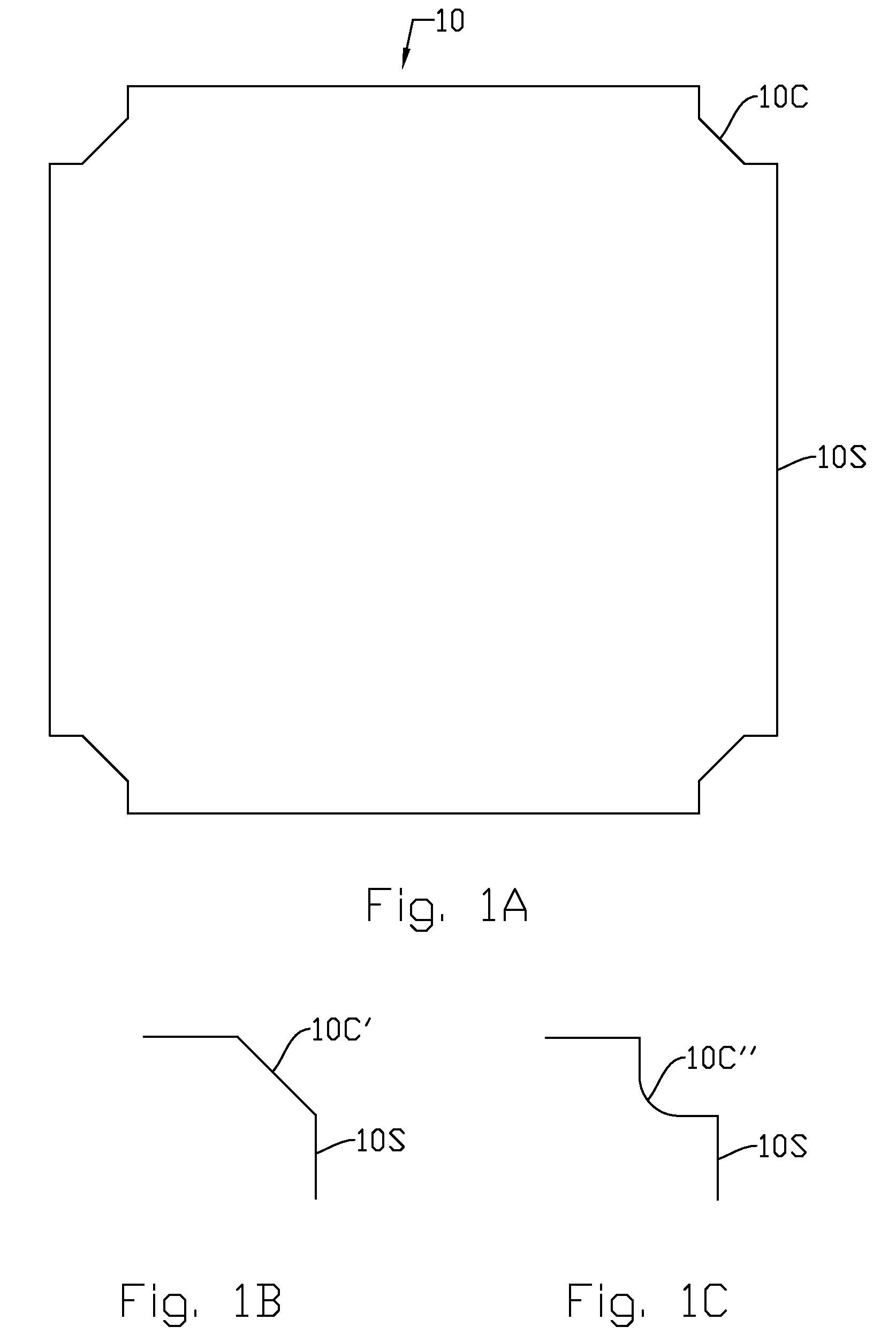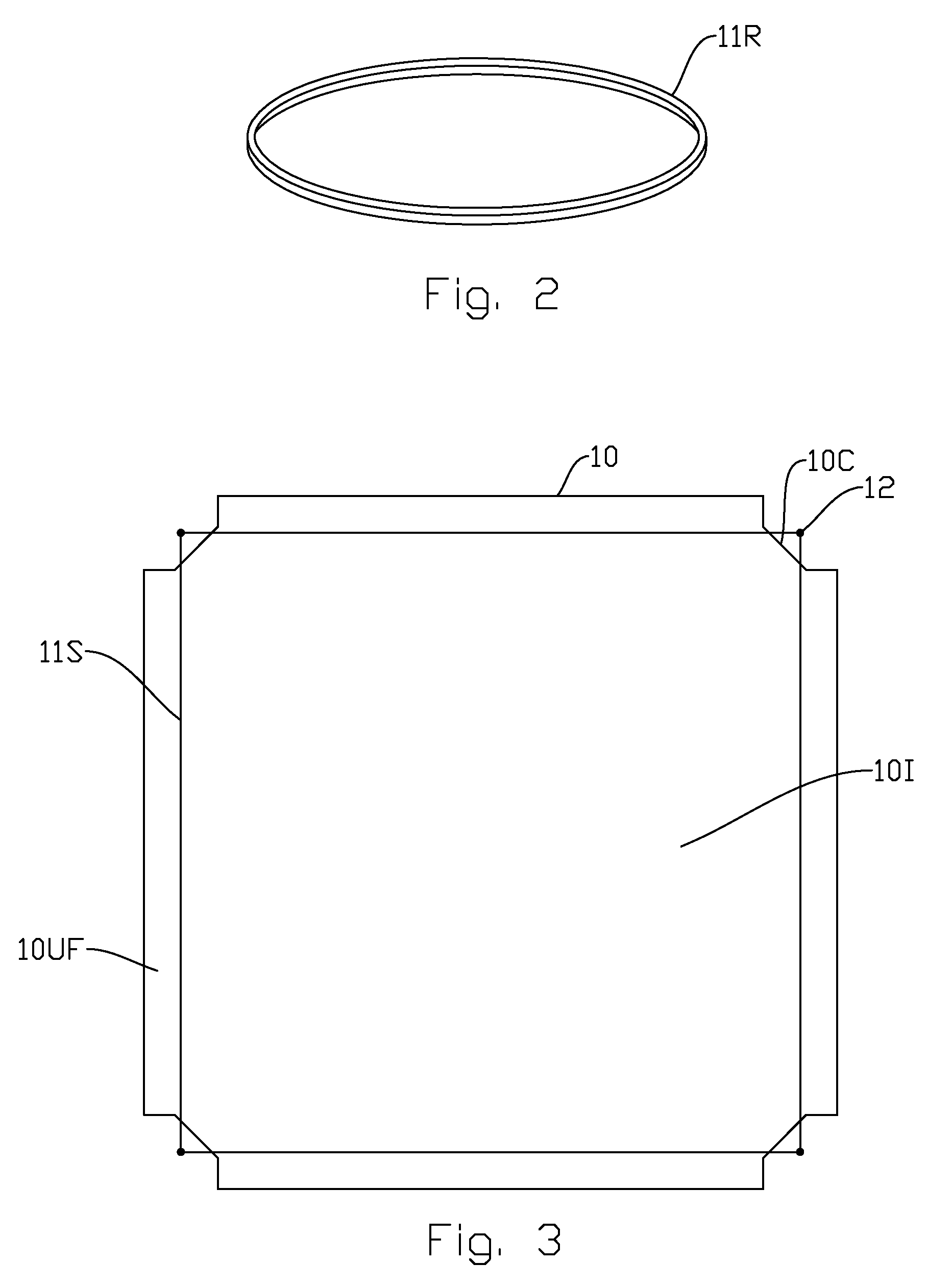More versatile flexible cover and method of manufacture
a flexible, container technology, applied in the field of container covers, can solve the problems of difficult to re-cover a container with the same piece of film, the film cannot be cut to the correct length and apply to the container, and cannot be used on a different size or shape container,
- Summary
- Abstract
- Description
- Claims
- Application Information
AI Technical Summary
Benefits of technology
Problems solved by technology
Method used
Image
Examples
first embodiment
[0025]FIG. 1A shows a plan view of a thin plastic sheet 10 of film material that is used to make the flexible cover of FIG. 6. Sheet 10 is cut from a larger roll of material (not shown), the methods of which are well known in the industry. The sheet is rectangular in shape in its free, unfolded and ungathered state and has four sides 10S, where each pair of adjacent sides are 90 degrees apart. A cut 10C is made at each corner to remove a predetermined amount of material from each corner for reasons discussed below. Such corner cuts preferably are done when the sheet is cut from the roll. Each cut has a diagonal center portion and two outer portions, each of which is perpendicular to the respective adjacent side 10S. The sheet preferably is made from any thin plastic film material such as polyethylene, polypropylene, nylon, polyethylene terephthalate (PET) or any combination of these and other materials. All of these materials can be used in a microwave oven. Additionally a biodegrad...
PUM
| Property | Measurement | Unit |
|---|---|---|
| Fraction | aaaaa | aaaaa |
| Length | aaaaa | aaaaa |
| Flexibility | aaaaa | aaaaa |
Abstract
Description
Claims
Application Information
 Login to View More
Login to View More - R&D Engineer
- R&D Manager
- IP Professional
- Industry Leading Data Capabilities
- Powerful AI technology
- Patent DNA Extraction
Browse by: Latest US Patents, China's latest patents, Technical Efficacy Thesaurus, Application Domain, Technology Topic, Popular Technical Reports.
© 2024 PatSnap. All rights reserved.Legal|Privacy policy|Modern Slavery Act Transparency Statement|Sitemap|About US| Contact US: help@patsnap.com










